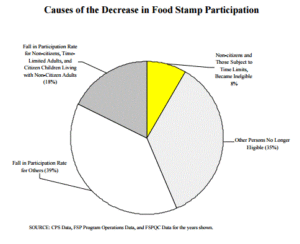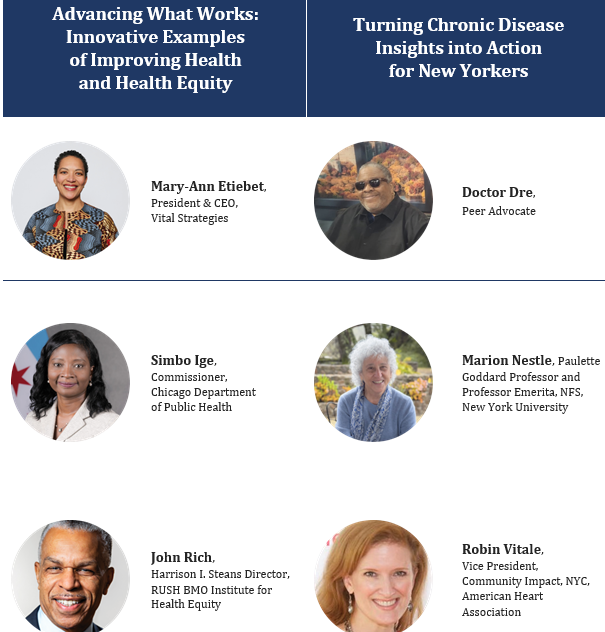Some thoughts about SNAP: declining enrollments and legal issues
Let’s start with the USDA’s latest figures on SNAP participation. Enrollment is down by a couple of million which could be good news (people have jobs that pay enough to make them ineligible) or bad news (elibility runs out).
The USDA issued a report in 2001 explaining the reasons.

As the report explains:
The large decrease in the number of food stamp participants is due to both a decrease in the number eligible for food stamps and a decrease in the rate at which eligible persons participate. The decrease in the participation rate played a slightly more important role, explaining 56 percent of the fall in the number of participants. The decrease in the number of eligible persons explains 44 percent of the fall in the number of participants.
Next, let’s look at the article in the New York Times on attempts to improve the quality of foods that can be purchased with SNAP benefits.
There have been many, many, many calls for the food stamp program to promote more healthful diets. Many states have requested waivers allowing for restrictions on what benefits can buy (some items, like alcohol, tobacco and household supplies, are already prohibited). Further restrictions have been rejected by the Department of Agriculture, which administers this welfare program.
The article is based on a study trying incentives for buying fruits and vegetables, restrictions on junk foods, and a combination of both. The study concluded:
A food benefit program that pairs incentives for purchasing more fruits and vegetables with restrictions on the purchase of less nutritious foods may reduce energy intake and improve the nutritional quality of the diet of participants compared with a program that does not include incentives or restrictions.
the study was accompanied by an editorial calling for a trial of mixed incentives and restrictions.
But, as Daniel Bowman Simon tells me, the law only allows the USDA to do incentives. By law, it cannot do additional exclusions. This is because Congress says what retailers can and cannot sell to SNAP recipients:
As written in 7 U.S. Code § 2012, section (k)
“Food” means (1) any food or food product for home consumption except alcoholic beverages, tobacco, hot foods or hot food products ready for immediate consumption….
It looks to me as though excluding soft drinks, for example, would require Congress—not the USDA—to change this definition or let states do so.
Daniel wonders why USDA doesn’t make this clear. Me too.
I’m told that three states have requested waivers and that the USDA is considering them. How? I don’t know, but stay tuned.
NOTE: Several readers filed corrections on this post and I thank them. I have revised it accordingly.


